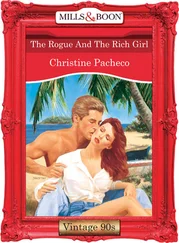In other dreams, Clover expressed shame about her husband’s mysterious espionage exploits. She entered nameless towns where “men were taking part in dark and nefarious negotiations.” In her dreams, as in life, she was excluded from these secret activities, which carried a tawdry air, but nonetheless sometimes held a powerful allure for her. Clover also gave vent to her sexual jealousy. In a dream fragment from September 1948, her husband complains that he has no fresh underwear. But when Clover peers into his dresser drawer, she finds it stuffed with undershorts. On closer inspection, however, each pair is stained with semen.
Other dreams overflow with her own libidinal energy and confusion. She finds herself in bed with young soldiers and naked women, an architect she knew, and in more than one reverie her disrobed sister. In a dream of October 1945, Clover was engaged to be married to a woman—who turned out to be Mary Bancroft. She was delighted to be marrying a woman but was horrified that “I didn’t have the physical apparatus to play a masculine role. I felt very shaven and shorthand empty in front and very much concerned how I could marry. Then I realized that, after all, she knew I was a woman, she was a woman herself, it wasn’t even my fault I was made that way. And as a matter of fact, what ever made me feel that I was supposed to be the man? Why wasn’t she the man? Perhaps she didn’t even expect me to be the man.”
It was her severe, judgmental father—a man repelled by “the inferiority” of the female sex—who had bestowed on her “my disgust of women,” Clover noted in another journal entry. “I want a penis,” she stated in another.
In other journal entries, which she called her “hymns of hate,” Clover expelled poisonous clouds of the rage and self-loathing that were billowing inside her. She fantasized about going on killing sprees with an ax or sledgehammer, and when those weapons proved too limited, she mused about poison gas. She unspooled long lists of potential victims, but she devoted one entire murder fantasy in March 1947 to her husband. “I hate my husband,” it began. “I hate my husband, I hate my husband. Oh, how I hate my husband … I want to kill him … I will be like a fighting cock with knives on my talons, I will cut him in ribbons with sharp knives, I will cut him in the back, I will even perhaps cut his throat with a sharp sharp knife tied to my talons when I am a bloody murderous fighting cock.”
Mary Bancroft sympathized with Clover, up to a point, as they compared notes about Dulles. By the time Clover arrived in Switzerland, Mary’s own affair with Dulles was waning and she brought a more detached perspective to their discussions. Sometimes they could even share a laugh about the enigmatic man who occupied the center of both of their lives. Clover told Mary that she had once heard the Dulles brothers referred to as sharks. “And I do think they are,” said the wife to the mistress. “I guess there’s no solution but for you and me to be killer whales!” From then on, the two women referred to Allen as “The Shark” and to themselves as the “Killer Whales.”
But Mary was more fascinated with the world of male power than Clover, and she prided herself on understanding men like Dulles in a way that his wife could not. In a later generation, Bancroft herself might have been a central player in that world. But she settled for taking an occasional place in the room, offering these men of action her insight and solace.
Mary, whose mother died hours after giving birth to her, was raised by her grandparents in a comfortable Cambridge, Massachusetts, household dominated by men whose ambitions always seemed just beyond their reach. Her grandfather was a former mayor of Cambridge and Harvard overseer who was once talked about as a candidate for governor but never made it beyond municipal politics. Her father had been a precocious young scholar, entering Harvard at the age of fourteen and graduating summa cum laude three years later. He became a lawyer and, like his father, a pillar of civic affairs, winning appointment as the director of the Port of Boston. But the top rung of power eluded Mary’s father, too, and, overcome by the disappointments of his life, he committed suicide in middle age. The man who made the biggest impression on young Mary was a step or two away from her immediate family, Clarence W. Barron, the short, white-bearded, twinkly-eyed publisher of The Wall Street Journal and the stepfather of her stepmother. She spent as much time as she could in “CW’s” lively vortex, watching him dictate memos from bed until noon and sending the male secretaries who were always at hand scurrying to and fro. At an early age, Mary became familiar with names like Rockefeller, Morgan, Carnegie, Harriman, Ford, and Du Pont. Their world always seemed to hover tantalizingly just beyond her fingertips.
Mary was disappointed in marriage. Her first husband—the father of her two children—turned out to be a dull company man. Her second—a French-Swiss banker who traveled frequently on business to the Balkans and the Far East—promised to be more exotic. But once she was installed in his Zurich home, they settled into a marriage of convenience that left Mary ready for more adventure.
When Mary was introduced to Dulles in December 1942, shortly after he arrived in Switzerland, they instantly took to each other. At thirty-nine, she was a decade younger than the OSS man, and by her own account she was “ at the height of my sexual prowessand usually always on the prowl.”
Mary was a big-boned woman with round cheeks and a ready smile that was all teeth. Nor was Allen the stuff of romantic dreams. Her first impression of him was of an aging man with “iron-gray hair” and the rumpled clothes of a distracted professor. But Mary not only possessed the right pedigree, she had a sharp intelligence and an accommodating warmth, and Dulles instantly knew he could put her to use. Mary, in turn, found herself immediately excited by the aura of power that seemed to surround Dulles. “ He actually shimmered with it,” she later wrote in a journal. “It seemed to cling to him as phosphorescence does to the oars when one is rowing a boat at night.”
Here was the man who would finally take her into the world of action about which she had fantasized ever since she was a girl, when she watched Wild Bill Donovan parade down Fifth Avenue with his troops on Armistice Day. Ever since then, she wrote, “ I longed for a life of adventure. I wanted to go everywhere, see everything.” She even daydreamed about being a “glamorous spy” like Mata Hari. Now she had found the man to make her dreams come true.
Dulles never made Bancroft an official OSS agent, but he quickly found a role for her, phoning her at her Zurich apartment every morning at nine thirty and giving her the day’s marching orders. She pumped information out of a variety of sources for him—from cleaning maids with German relatives to members of the intellectual and artistic elite in the German-Austrian exile community, a crowd with whom the well-read and over-analyzed Bancroft was more comfortable than Dulles.
Mary also proved that she was more tuned in to certain nuances of the spy craft than Dulles. She realized, for instance, that intelligence could be gathered from the enemy as well as Allied camps by tapping into the underground homosexual network that ran through Europe’s diplomatic and espionage circles. “One of my [OSS] colleagues was frantic,” Bancroft later recalled, “because he wanted to get a—how do the French say it, a tuyaux —you know, a line into this homosexual network. And he used to bang on the desk and say, ‘I wish Washington would send me a reliable fairy! I want somebody with a pretty behind so I can get into that fairy network and find out what the British are doing in North Africa!’” Her colleague couldn’t bring himself to discuss his delicate recruitment needs with the old-fashioned Dulles, who—as Mary repeatedly observed in her journals—had been born in the nineteenth century. So Mary broached the subject with Dulles, who did indeed prove clueless about the homosexual beau monde, including its sexual mechanics. “ What do those people actually do ?” he asked Mary.
Читать дальше











